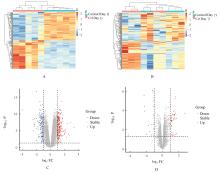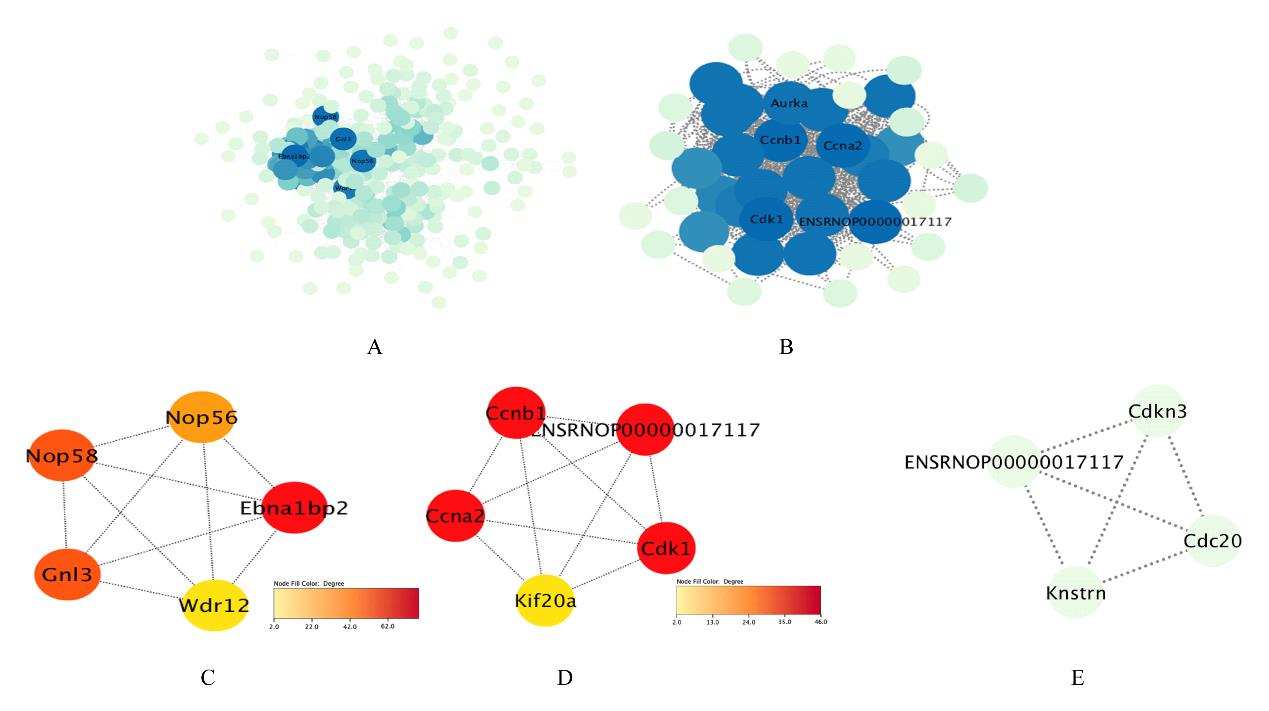| 1 |
SUN H, BROCATO J, COSTA M. Oral chromium exposure and toxicity[J]. Curr Environ Health Rep, 2015, 2(3): 295-303.
|
| 2 |
仪 民, 仪慧兰, 吴丽华. 铬在小鼠体内的蓄积效应与毒性[J]. 生态毒理学报, 2017, 12(6): 259-265.
|
| 3 |
BALAKRISHNAN R, KUMAR C S V S, RANI M U, et al. An evaluation of the protective role of α-tocopherol on free radical induced hepatotoxicity and nephrotoxicity due to chromium in rats[J]. Indian J Pharmacol, 2013, 45(5): 490-495.
|
| 4 |
边寰锋. Vit-C对Cr(Ⅵ)诱导大鼠肝毒性的保护作用及其可能机制的研究[D]. 长沙: 中南大学, 2007.
|
| 5 |
ZHITKOVICH A. Importance of chromium-DNA adducts in mutagenicity and toxicity of chromium(Ⅵ)[J]. Chem Res Toxicol, 2005, 18(1): 3-11.
|
| 6 |
NICKENS K P, PATIERNO S R, CERYAK S. Chromium genotoxicity: a double-edged sword[J]. Chem Biol Interact, 2010, 188(2): 276-288.
|
| 7 |
O’BRIEN T J, CERYAK S, PATIERNO S R. Complexities of chromium carcinogenesis: role of cellular response, repair and recovery mechanisms[J]. Mutat Res, 2003, 533(1/2): 3-36.
|
| 8 |
LIANG Q, ZHANG Y J, ZENG M, et al. The role of IP3R-SOCCs in Cr(Ⅵ)-induced cytosolic Ca2+ overload and apoptosis in L-02 hepatocytes[J]. Toxicol Res (Camb), 2018, 7(3): 521-528.
|
| 9 |
XIAO F, FENG X T, ZENG M, et al. Hexavalent chromium induces energy metabolism disturbance and p53-dependent cell cycle arrest via reactive oxygen species in L-02 hepatocytes[J]. Mol Cell Biochem, 2012, 371(1/2): 65-76.
|
| 10 |
JIN Y X, ZHANG S B, TAO R H, et al. Oral exposure of mice to cadmium (Ⅱ), chromium (Ⅵ) and their mixture induce oxidative- and endoplasmic reticulum-stress mediated apoptosis in the livers[J]. Environ Toxicol, 2016, 31(6): 693-705.
|
| 11 |
BARRETT T, WILHITE S E, LEDOUX P, et al. NCBI GEO: archive for functional genomics data sets: update[J]. Nucleic Acids Res, 2013, 41(Database issue): D991-D995.
|
| 12 |
YI M, HORTON J D, COHEN J C, et al. WholePathwayScope: a comprehensive pathway-based analysis tool for high-throughput data[J]. BMC Bioinformatics, 2006, 7: 30.
|
| 13 |
MADEJCZYK M S, BAER C E, DENNIS W E, et al. Temporal changes in rat liver gene expression after acute cadmium and chromium exposure[J]. PLoS One, 2015, 10(5): e0127327.
|
| 14 |
SZKLARCZYK D, GABLE A L, NASTOU K C,et al. The STRING database in 2021: customizable protein-protein networks, and functional characterization of user-uploaded gene/measurement sets[J]. Nucleic Acids Res, 2021, 49(D1): D605-D612.
|
| 15 |
XIE Z R, BAILEY A, KULESHOV M V, et al. Gene set knowledge discovery with enrichr[J]. Curr Protoc, 2021, 1(3): e90.
|
| 16 |
管冬元, 方肇勤, 梁 超, 等. EBNA1BP2基因在肝癌形成过程中的表达及不同中医治法的调控作用[J]. 中西医结合肝病杂志, 2013, 23(1): 33-35, 70.
|
| 17 |
曲 杰, 林萍萍, 吕喜英, 等. NOP56在乳腺癌组织中的表达情况及对临床预后的意义[J]. 生物信息学, 2019, 17(2): 122-130.
|
| 18 |
ZHANG Y, LIN Z K, LIN X F, et al. A gene module identification algorithm and its applications to identify gene modules and key genes of hepatocellular carcinoma[J]. Sci Rep, 2021, 11(1): 5517.
|
| 19 |
HE J Y, YU J. Long noncoding RNA FAM83A-AS1 facilitates hepatocellular carcinoma progression by binding with NOP58 to enhance the mRNA stability of FAM83A[J]. Biosci Rep,2019,39(11): BSR20192550.
|
| 20 |
ZHANG S Y, ZHAO H R, CHEN Y, et al. GNL3 regulates SIRT1 transcription and promotes hepatocellular carcinoma stem cell-like features and metastasis[J]. J Oncol, 2022, 2022: 1555670.
|
| 21 |
MI L J, QI Q H, RAN H W, et al. Suppression of ribosome biogenesis by targeting WD repeat domain 12 (WDR12) inhibits glioma stem-like cell growth[J]. Front Oncol, 2021, 11: 751792.
|
| 22 |
DING K, LI W Q, ZOU Z Q, et al. CCNB1 is a prognostic biomarker for ER+ breast cancer[J]. Med Hypotheses, 2014, 83(3): 359-364.
|
| 23 |
ZHUANG L P, YANG Z G, MENG Z Q. Upregulation of BUB1B, CCNB1, CDC7, CDC20, and MCM3 in tumor tissues predicted worse overall survival and disease-free survival in hepatocellular carcinoma patients[J]. Biomed Res Int, 2018, 2018: 7897346.
|
| 24 |
XIAO Y N, MA J M, GUO C L, et al. Cyclin B2 overexpression promotes tumour growth by regulating jagged 1 in hepatocellular carcinoma[J]. Aging, 2022, 14(6): 2855-2867.
|
| 25 |
BAUMANN K. Cyclin’ on mRNA[J]. Nat Rev Mol Cell Biol, 2016, 17(11): 677.
|
| 26 |
ASGHAR U, WITKIEWICZ A K, TURNER N C,et al. The history and future of targeting cyclin-dependent kinases in cancer therapy[J]. Nat Rev Drug Discov, 2015, 14(2): 130-146.
|
| 27 |
IZAWA D, PINES J. The mitotic checkpoint complex binds a second CDC20 to inhibit active APC/C[J]. Nature, 2015, 517(7536): 631-634.
|
| 28 |
KAPANIDOU M, CURTIS N L, BOLANOS-GARCIA V M. Cdc20: at the crossroads between chromosome segregation and mitotic exit[J]. Trends Biochem Sci, 2017, 42(3): 193-205.
|
| 29 |
LI J, GAO J Z, DU J L, et al. Increased CDC20 expression is associated with development and progression of hepatocellular carcinoma[J]. Int J Oncol, 2014, 45(4): 1547-1555.
|
| 30 |
FAN C, CHEN L, HUANG Q L, et al. Overexpression of major CDKN3 transcripts is associated with poor survival in lung adenocarcinoma[J]. Br J Cancer, 2015, 113(12): 1735-1743.
|
| 31 |
DAI W, MIAO H L, FANG S, et al. CDKN3 expression is negatively associated with pathological tumor stage and CDKN3 inhibition promotes cell survival in hepatocellular carcinoma[J]. Mol Med Rep, 2016, 14(2): 1509-1514.
|
| 32 |
LIU X R, GONG H, HUANG K. Oncogenic role of kinesin proteins and targeting kinesin therapy[J]. Cancer Sci, 2013, 104(6): 651-656.
|
| 33 |
LIU X R, LI Y K, ZHANG X, et al. Inhibition of kinesin family member 20B sensitizes hepatocellular carcinoma cell to microtubule-targeting agents by blocking cytokinesis[J]. Cancer Sci, 2018, 109(11): 3450-3460.
|
| 34 |
XIONG Y Y, JU L G, YUAN L S, et al. KNSTRN promotes tumorigenesis and gemcitabine resistance by activating AKT in bladder cancer[J]. Oncogene, 2021, 40(9): 1595-1608.
|
| 35 |
LIU Y J, LI J C, LIAO L P, et al. Cyclin-dependent kinase inhibitor roscovitine attenuates liver inflammation and fibrosis by influencing initiating steps of liver injury[J]. Clin Sci (Lond), 2021, 135(7): 925-941.
|
 )
)




